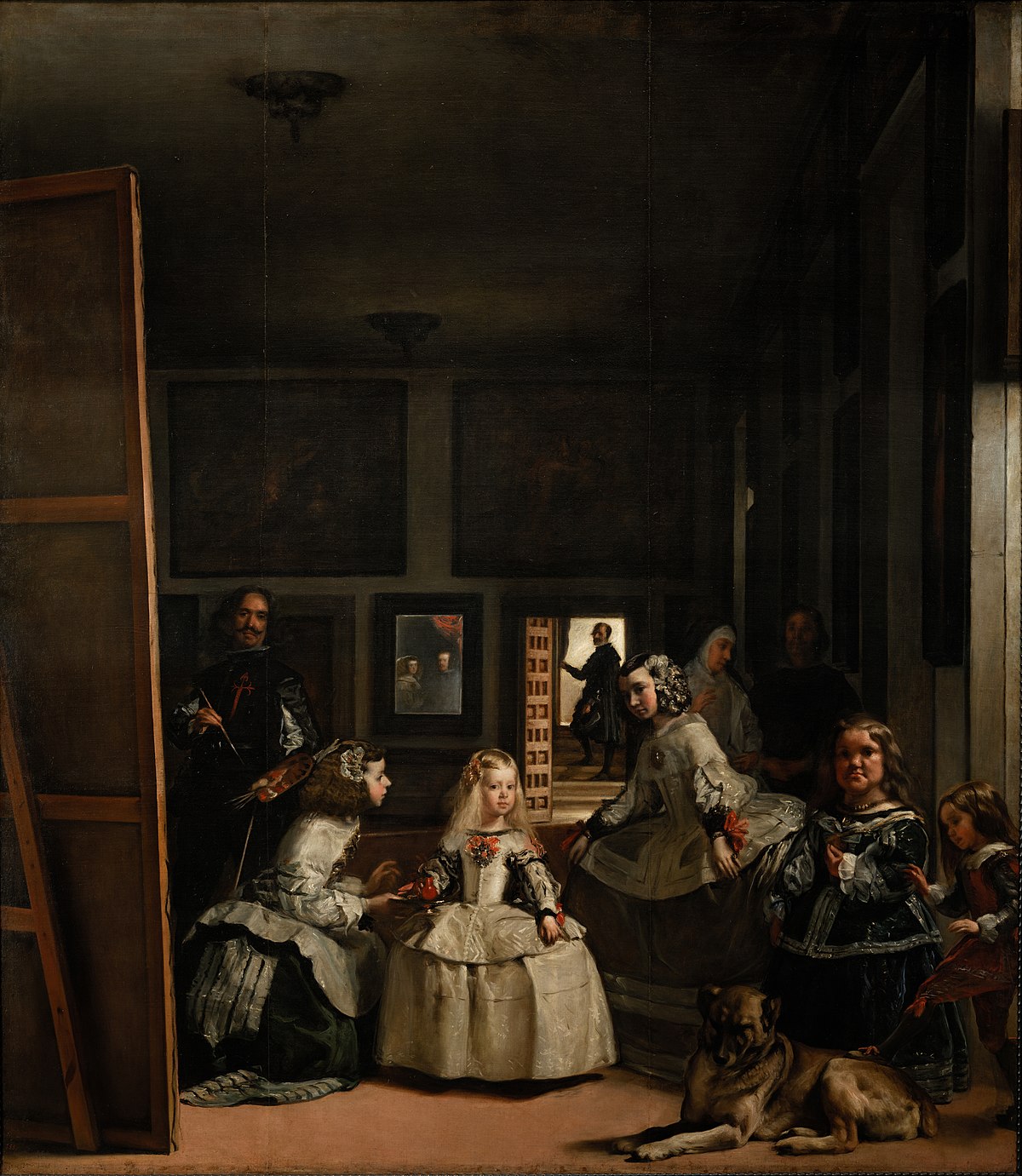To begin with, let's take a look at those paintings, Las Meninas: one is portrayed by Diego Velázquez, and the other is drawn by Pablo Picasso.
Not surprisingly, those pictures are the dramatization of the same scene. The functions of the double portrait I observe in this case is the "mirror image"; even before comparing these two, but Velázquez's painting itself, and Picasso's single work itself already include this theme.
In both cases, two central figures in the picture displayed in front of the audience are the painter in the picture and the painter on the outside of the picture. The painting, at first glance, draws an audience's attention to the king and queen in the mirror, and the audience might see the picture was probably to portray the king and queen outside of the portrait. That could be true as one of the interpretations, but I would dare to offer another possibility. In an actual situation, the picture was drawn by the painter while the painter in the picture is also painting. For this reason, it is reasonable to interpret them as a mirror image of each other, and, by extension, Jacque Lacan's concept of the Gaze can be applicable. Hence, what the painter truly watching is the painter himself. In other words, the painter in the picture is watching his other half or his alter-ego outside of the picture frame.
To support this idea, I would point out the painter's position in the picture; he stands away from the canvas and slightly comes to the center as if he displays his existence in front of the audience. The painter in the picture is the mirror image of the actual painter, and the painter outside of the picture depicts himself and his surroundings. The pairing of the painters, one is the inside of the portrait, and the other on the outside can be interpreted as Freud's concept of unconscious and conscious, the Ego and the Subject, or Lacan's theory of the mirror stage and the concept of the Gaze as its extension. Applying the Lacanian theory of the mirror stage, their relationship is the subject who is contemplating itself before the mirror and of the image it sees in the mirror. More to the point, it can develop into the Lacanian concept of the Gaze: the Ego giving the gaze to its mirror image and the object being gazed as objet petit a. Saussure's notion of Signifier and Signified can be also applicable.
One might see a foreshadow of Picasso's deconstructive portrait in Velázquez's painting that allows centralizing the element which seems absent or marginal. Velázquez depicts a realistic figure, on the other hand, Picasso dramatizes it as a symbolical figure. While Velázquez's portrait does not fully reveal the position, status, and relationship in the picture, Picasso puts a spotlight on those elements so that the audience can observe them without knowing the information of background. It takes form as binary oppositions, light and dark, high and low, near and farther object, and central elements and marginal ones.
Deconstructed Velázquez's portrait, Picasso's painting symbolically depicts archetypal objects, and captures dimension which is invisible by physical eyes; it dramatizes the substance of invisible that can be perceived only in our own psyche. In Velázquez's portrait, the painter outside of the picture is literally depicted outside of the picture.
However, we will see the notion of that painter's existence inside of the picture in Picasso's portrait. It appears as two faces. The painter in the picture looks like two faces which remind me of Janus; however, faces of Janus turn opposite directions, the painters look at each other face-to-face. Or rather, it looks like a motif of Rorschach test. These two faces are the representation of the mirror image: the painter in the picture and the actual painter outside of the picture.
As well as highlighting the binary oppositions, Picasso depicts the two faces in the picture: one is the painter portrayed in the picture and the other is the painter depicting himself, reflecting the real painter outside of the picture. Adding one more personality which existed as a notion but was physically missing in Velázquez's portrait, Picasso presented the missing, absent, or marginal object in Velázquez's portrait to reveal the central object of the portrait.



